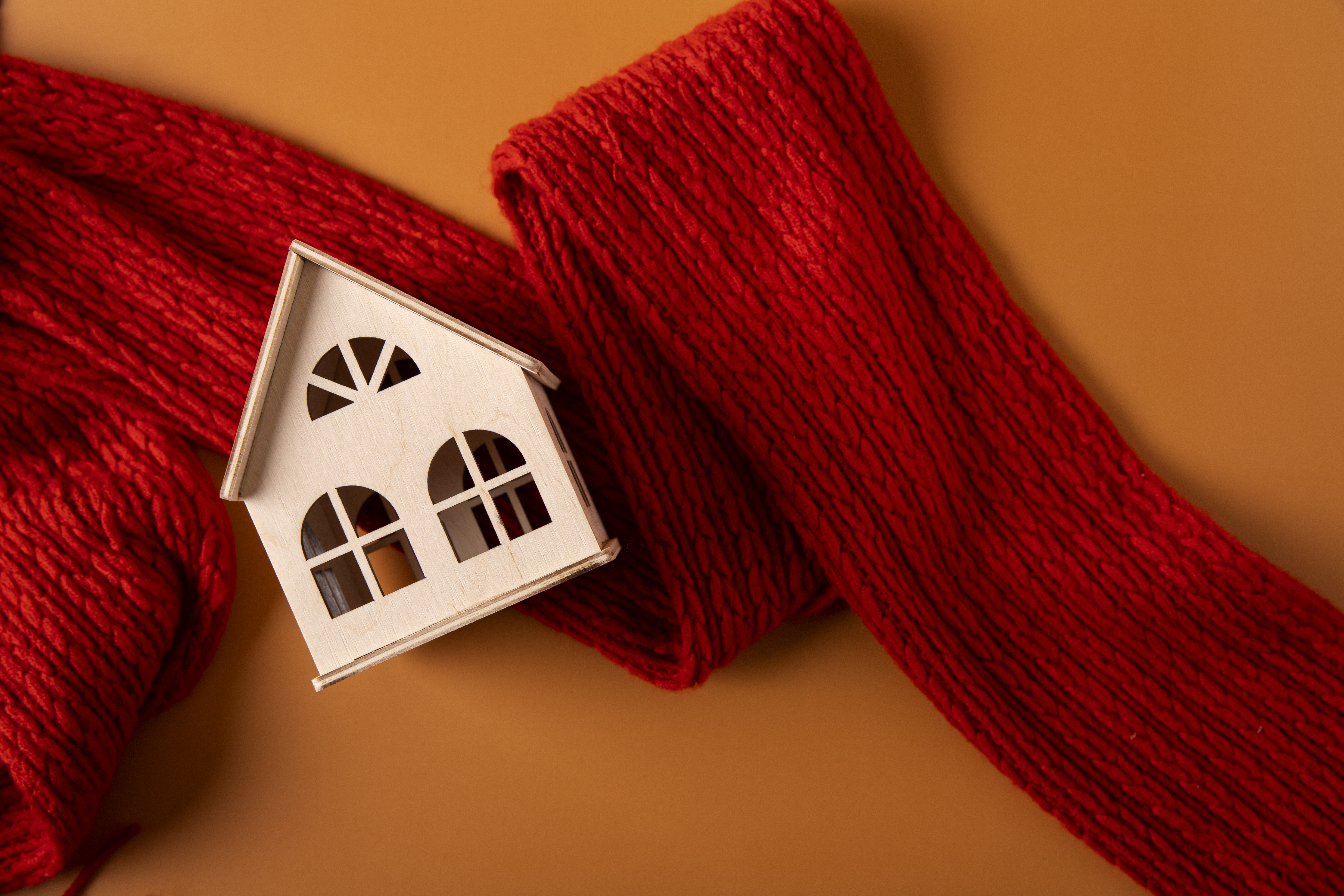So you’ve finished the last of those turkey leftovers and just about thrown in the towel on your workout regimen until some undefined time after the first of the year. (We get it— the holiday party circuit is rough.) It’s high time for relaxing and merriment! Certainly your house can wait for a little TLC until the new year, right?
Alas, we don’t have the answer you want to hear. The truth is, if you squeeze in a smidgen of time to do some routine maintenance chores this month, you’ll save yourself a load of potential trouble—and repair costs—down the road.
So down a big glass of eggnog, and take a swing through this short, painless checklist of tasks to tackle in December. We promise they’re so simple, you might just be done before you can sing the chorus to “Jingle Bells.”
Protect pipes
You can guard against burst pipes by wrapping them in foam insulation, closing foundation vents, and opening cabinet doors under sinks to allow warm air to flow around supply lines. You should also keep your thermostat at 60 degrees or higher overnight. Also make sure you’ve drained all your exterior hoses.
In the event of an emergency, you should know where your main water shut-off is located; it’s usually in the crawlspace or basement, where your water supply enters your house, or inside a water meter box outside your home.
DIY: If your pipes have indeed frozen, leave the affected faucets on and turn off your water supply, says Jenny Popis, a Lowe’s Home Improvement spokeswoman. Then locate the freeze point; if none of the faucets work, the culprit is probably the main supply line.
Check all areas where supply lines enter your home, and feel the length of frozen pipes to determine which area is coldest. You can attempt to thaw it using a hand-held hair dryer. Another option: Wrap the frozen section in washcloths soaked in hot water—then thaw until you have full water pressure.
Call in a pro: If you can’t locate the freeze point or your pipes have burst, call in a licensed plumber, which will run between $150 and $600 on average (depending on the severity of the leak).
Give your oven some lovin’
Improperly sealed ovens can result in a loss of more than 20% of the machine’s heat, leading to longer cooking times, lost energy, and (most importantly) delayed gingerbread cookie gratification.
DIY: Check the seal around the oven door for breaks or cracks, and replace the seal for optimal oven performance. If you choose to tackle this yourself, be sure you disconnect power to the oven before digging in, and consult your manufacturer’s instructions to find the correct replacement part.
Call in a pro: Not the DIY type? A typical oven fix takes less than an hour and will cost between $100 and $250.
Check insulation
Improve the efficiency of your pad by checking your attic’s insulation—and save up to $600 a year in energy costs.
DIY: Examine the insulation in your attic to see whether it’s flattened or sagging.
“If the insulation is level with the attic floor joists, you should be in pretty good shape,” says Krystal Rogers-Nelson of ASecureLife.com. “But if it’s below the joists, you’ll need to add more to make sure you keep the warm air in and the cold air out.”
Call in a pro: If your insulation is lacking, you’ll need a pro to get it up to snuff, at an average cost of around $1,000 to $2,500.
Prevent potential fire hazards
“Oh Christmas tree, oh Christmas tree, you giant box of tinder.”
It turns out that the gorgeous Douglas fir you’ve so painstakingly decorated could pose a huge fire risk. In fact, Christmas trees account for more than $13 million in property damage per year, according to the American Christmas Tree Association (yes, that’s a thing). Throw in Hanukkah candles, unswept chimneys, ancient space heaters, and faulty strings of lights, and you’ve got a recipe for holiday disaster.
DIY: If you can’t live without a live tree, be sure to keep it well-watered (seriously, do this every day). Keep it at least 3 feet away from all heat sources, turn your tree lights off at night, and toss damaged lights. (Extra credit: To save energy, use LED lights for your holiday decor. They use 80% to 90% less energy than incandescent bulbs and last up to 100,000 hours—as opposed to 3,000.)
Similar rules apply for space heaters: Keep them away from drapes or furniture, which could catch fire from direct contact and radiant heat; plug them into their own outlets (without extension cords); and never leave one running overnight.
Of course, other common sense precautions apply: Blow out all of those candy cane–scented candles before bed (or just use battery-operated ones), never use paper or flammable liquid to start a fire, and use a screen to keep embers where they belong.
Call in a pro: We’ve said this before, but rule numero uno of fireplace safety is having it professionally cleaned at least once a year. Expect to spend between $125 and $250.
Prevent ice damming
Ice what-ing, you ask? It turns out, an ice dam—a ridge of frozen water that forms at the edge of your roof—is even more fearsome than the average run-of-the-mill icicle. Left untreated, ice dams can prevent water from running off your roof, resulting in leaks and damage to walls, ceilings, and insulation.
DIY: Ice dams will begin to form if snow (and ice, obviously) builds up on your roof. So the easiest way to prevent a problem is to clear your roof of that white slush—pick up a snow rake, grab a ladder, and get to work. While you’re up there, trim any branches hanging over your roof: Under the weight of snow or during a windstorm, these can break and cause damage to your shingles. Finally, keep gutters clear of leaves and other debris so melting snow can flow freely.
Call in a pro: Installing heating cables along the edge of your roof can keep snow runoff from freezing. Expect to spend between $600 and $900.
Get secure
The holidays are prime time for burglaries and break-ins (those daily Amazon Prime deliveries are just too tempting for package thieves). That’s why you should be extra-vigilant, especially as the days get shorter—and you head out of town or dance off to holiday parties.
DIY: Illuminate the area around your house, lock doors and windows, and trim bushes to deter intruders. You might also look into installing security cameras around your door.
“The six weeks between Thanksgiving and Christmas are prime for packages being delivered to your home for the holidays,” says Emily Long of SafeWise.com. “That means burglars are more likely to swipe your packages if they are left outside.”
A security camera you can monitor with your smartphone allows you to have eyes on your home anytime, from anywhere.
Call in a pro: Professionally monitored security systems will sound ear-piercing alarms and call the police if an intruder enters your space. Options abound here, so do your research before committing to a system (and a monthly service fee).














